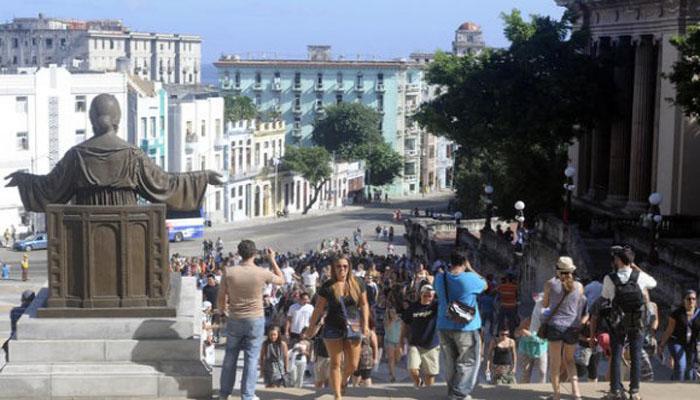Cuban education was nationalized in 1959 at a time when less than half the children had access to education. Today the island has the highest literacy rate in the world. This privilege comes at a cost of loyalty to the state, and an obligation to do community service and for males, military service. In other words, the Cuban educational ethos is built on giving back.
The process begins with 6 years of primary education from ages 6 to eleven, during which time the "3 R's" of reading, writing and arithmetic are taught.
Secondary education is divided into 3 years of basic secondary education and three years of pre-university . The purpose of the first 3 years, or middle education in Cuba, is to provide a grounding in traditional school subjects like languages, technology and social science.
At the end of this basic secondary education, pupils can choose between pre-university education and technical and professional education. Those who complete pre-university education are awarded what Cubans call the Bachillerato. Technical training leads to two other levels of qualification - skilled worker and middle-level technician.
The final three years of pre-university schooling at the secondary level are an extension of middle school. This time, though, academic standards are tighter, and enthusiastic participation in extra curricular activities is a must. School holidays are partly spent doing one or other form of social service
Tertiary or university level academic excellence is not new to Cuba, with the University of Havana being established in 1727. Today universities, higher institutes, higher pedagogical institutes, centers of higher education and polytechnic institutes continue the tradition. For male students military service is a prerequisite of university entrance in Cuba
The ministry of higher education manages policy for both undergraduate and graduate programs. This includes course content, methodology, teaching and allocations of student places as well. Currently over 110,000 students are enrolled.
The first and main stage of higher education usually lasts for four or five years. In Medicine, studies last for five or six years. Courses that are offered to workers usually last longer than traditional courses. At the end of the first stage, students are awarded a Licenciatura or a professional diploma.
University level second stages lead to : Diplomados, Maestrías, Especialistas: Diplomado courses have three levels, each requiring some 200 hours of theoretical instruction, practical work, industrial internship and a final project.
Students can gain academic credit towards completion of a Master's degree and are allowed to work on a Master's thesis as they progress through Diplomado studies. The second stage corresponds to a period of in-depth study and research which leads to the Maestría after two years.
Three to four year programs lead to the candidacy for a Doctor en Ciencias. This qualification is required for entry to studies for the Doctor en Ciencias. The Doctor en Ciencias is awarded following additional years of scientific research. The thesis has to be defended before a jury.
Successful graduates of all stripes deliver their new-learned skills for two to three years of social service generally in rural communities, and for lower incomes than national rates. This is the famous Cuban ‘Giving back’ an institution that is both a preservative and a cross fertilizer of a vibrant culture and well worth the attention of the outside world.


